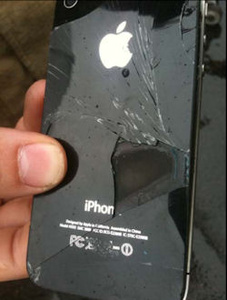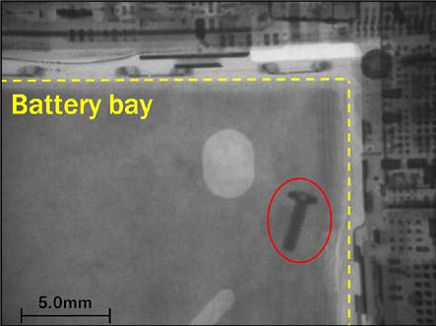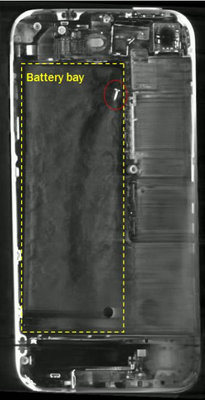 Thermal runaway event was the result of a bad repair.
Thermal runaway event was the result of a bad repair.
The source was identified as an Apple iPhone 4. The Australian Transport Safety Bureau (ATSB) launched an investigation into the incident, which also included the Federal Aviation Authority (FAA) in the United States.
The investigation found that the iPhone had been repaired after the screen was damaged, and that repair was not carried out by an authorized service center. At the base of the iPhone is a 30-pin connector, held in place by two screws at either side. The investigators noted that the screw appeared to be missing.

 An X-ray carried out on the iPhone showed the missing screw had been misplaced in the battery bay of the iPhone, where it punctured the Lithium-Ion battery casing and caused an internal short circuit. This led to a thermal runaway event - a situation where an increase in temperature influences internal battery conditions in a manner which causes a reaction to further increase the temperature. This process can occur very rapidly and can cause combustion of the battery and surrounding materials.
An X-ray carried out on the iPhone showed the missing screw had been misplaced in the battery bay of the iPhone, where it punctured the Lithium-Ion battery casing and caused an internal short circuit. This led to a thermal runaway event - a situation where an increase in temperature influences internal battery conditions in a manner which causes a reaction to further increase the temperature. This process can occur very rapidly and can cause combustion of the battery and surrounding materials.
The report into the incident is criticial of the repair carried out on the iPhone, citing the following issues...
- The incident mobile telephone had sustained a thermal runaway event within its lithium-ion battery
- The screw that was found in the battery area had precipitated the incident and was most likely from the 30-pin connector
- One of the screws used to fasten the main circuit board was missing
- Two screws that retained a flexible cable were installed incorrectly (swapped locations)
- The main circuit board flexible cable adhesive was disturbed
- The two liquid contact indicators were missing
- A metal clip near the battery was deformed














